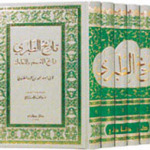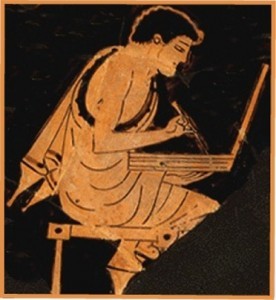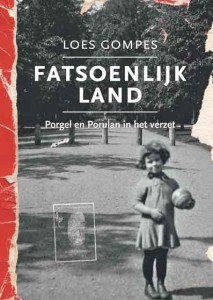Zeynep Tufekci ~ How The Internet Has Made Social Change Easy To Organize, Hard To Win
Today the speed at which we spread information is so fast that a single email can launch a worldwide awareness campaign, as with the Occupy movement. Yet as techno-sociologist Zeynep Tufekci seeks to show, the ease of social media can actually hurt social change in the long run. From Gezi to the Arab Spring to Ukraine to Hong Kong, she shows how today’s movements can miss out on the benefits of doing things the hard (and slow) way.
TEDTalks is a daily video podcast of the best talks and performances from the TED Conference, where the world’s leading thinkers and doers give the talk of their lives in 18 minutes (or less). Look for talks on Technology, Entertainment and Design — plus science, business, global issues, the arts and much more.
Find closed captions and translated subtitles in many languages at http://www.ted.com/talks/zeynep_tufek…
Follow TED news on Twitter: http://www.twitter.com/tednews
Like TED on Facebook: https://www.facebook.com/TED
Subscribe to our channel: https://www.youtube.com/user/TEDtalksDirector
Read more: Zeynep Tufekci – Social Movements and Governments in the Digital Age: Evaluating a Complex Landscape
On Islamic Historiography
 By Islamic Historiography I mean written material concerning the events of the early period of Islam written by Muslim historians. This material is essential for any major research on Islam but has been continuously discredited by predominantly Western scholars. Therefore, before the study of these texts, an outline of their characteristics and a short discussion about the criticisms of these texts and their authors is indispensable.
By Islamic Historiography I mean written material concerning the events of the early period of Islam written by Muslim historians. This material is essential for any major research on Islam but has been continuously discredited by predominantly Western scholars. Therefore, before the study of these texts, an outline of their characteristics and a short discussion about the criticisms of these texts and their authors is indispensable.
Among the problems proclaimed in the criticisms are: the gap between the historical events and their recording, the fact that early historical compilations have not survived and have been paraphrased or summarized in later digests, the problem of the oral origin of many reports, the task of the historian, the incompatibility of non-Islamic sources, forged reports, political influences on historiography, the purpose of historiography and the originality of the historian.
In this paper the criticisms concerning the Islamic historiography and the answers of the some historians to these criticisms will be surveyed.
The origin, the terminology and the form of the early Islamic historiography
According to Robinson, Arabs produced very little written material before Islam and relied instead on orality.[1]
It seems logical to conclude that the enormous volume of written work which was produced after Islam[2] must be ascribed primarily to the emphasis in various Qur´ānic verses on writing and the stories in this book about the previous peoples and prophets, which encouraged the Muslims to narrate, and reflect and investigate about the origins of those narrations, examples are, the next two verses:
…By the pen and what they write with it…. (Qur’ān 68:1)
Relate these allegorical stories (to the people) perhaps they might think. (Qur’ān 7:176).3
The second important impetus seems to have been the traditions of the Prophet of Islam which were to be preserved for the future generations. Islamic Tradition informs us that the Prophet of Islam discouraged his followers, in the initial stages of his mission, to write about him in order to prevent any confusion between his sayings and the Qur´ān.[4]
However the reports about the alteration of this attitude in a later stadium encouraged the biographers to write Sīra or biographical collections at the end of the first and beginning of the second Islamic century. The campaigns of the Prophet (Maġāzī) and the conquests (Futūḫ) [5] were the other historical works, produced in the period between the first works and the later great compilations.
The collections with the modern name for history, Ta’riḥ, appeared in the 2nd/9th century.[6]
Their source material consisted of Aḥbār which according to Rosenthal means both information and the events and corresponds to history in the sense of story, anecdote (ḫekāyat). Later, when the term was used together with āthār, it became synonymous to hadīth.[7]
The other sources were the above mentioned Sīra, Maġāzī and Futūḫ works, the books of aḥbāriyyūn and genealogical works and oral accounts.[8]
Thus, the first historical works, as the ordered record of the events of the past, began as a mixture of the above mentioned genres. This is the same multi-faceted character that Robinson says history used to have:
“…coming via Latin from the Greek historia, generally meant ´inquiry´; it earlier described a variety of genres, including geography, folklore and ethnography, in addition to what we would commonly understand to be history.”[9]
And the way Rosenthal defines history:
History in the narrow sense.., should be defined as the literary description of any sustained human activity either of groups or individuals which is reflected in, or has influence upon the development of a given group or individual….for the modern mind, the general concept of history may, in theory, be extended to include all animate or inanimate matters. [10]
While he also mentions that:
Muslim historiography includes those works which Muslims, at a given moment of their literary history, considered historical works and which, at the same time, contain a reasonable amount of material which can be classified ashistorical according to our definition of history, as given above. [11]
Thus, history is made up of many elements which together have certain meaning for certain people. This is by no means the denial of general definitions of or theories about history, rather, the emphasis is on the meaning of a certain concept, object or idea in a specific context.
Not only the combination of aḥbār and āthār became synonymous to ḫadīth, but also the form of historical narratives took the form of ḫadīth. According to Dūrī two perspectives existed among the early compilers: the ḫadīth perspective and the tribal perspective. Very soon, the first perspective prevailed which explains why the Islamic historiography has maintained the form of ḫadīth, thus, beginning with an isnād or chain of transmitters, continued by the report (ḥabar).[12]
The problems concerning the Islamic historiography
Islamic history books and Muslim historians have been the subject of both praise and critique. There are problems concerning the historical texts and those concerning the narrators both historians and their transmitters.
One problem ascribed to Islamic historiography is the fact that there is a gap between the time of the events of the early period of Islam and their historiography. Is this gap so long that it can in fact disqualify the whole historiography? It seems that this gap was not considered to be very important when the Western scholars first came into contact with the Islamic sources of the second and third century of Islamic era.[13] Perhaps this was caused by their earlier experiences with other historiographies. The later recording of the events in Islam had its precedents in other historiographies. For example, according to Robinson: The gap between event and record in early Islam is relatively narrow compared with our source material for the ancient Israelites, which usually dates from several centuries after the facts they purport to relate.[14]
Thus the problem of late compilation does not seem to be restricted to Islamic historiography. Read more
Fatsoenlijk land ~ Inhoudsopgave
Fatsoenlijk land – Porgel en Porulan in het verzet van Loes Gompes Het boek verscheen in 2013 bij Rozenberg Publishers – ISBN 978 90 361 0350 3 – Met DvD van de documentaire Fatsoenlijk land (Lumen Film – 60 min.)
Nu online:
Proloog ~ Verzet in twee werelden
Athene, Rome en Jeruzalem in Alkmaar
De Duitse inval en het ontslag van de vaders
De PP-groep
De onderduikers
De Vrije Groepen Amsterdam
Porgel en Porulan in documenten en voedsel
Bevrijding
Bevrijding – Foto’s Jan Hemelrijk
Epiloog
Dankwoord
Jan Hemelrijk gaf de groep de naam PP-groep. Dat gebeurde bij de oprichting van de Vrije Groepen Amsterdam (VGA) in 1944 toen elke groep een naam moest kiezen. Je zou kunnen denken dat het een verwijzing is naar Potasch en Perlemoer, de twee kibbelende joodse zakenlieden uit de bekende gelijknamige vooroorlogse volkskomedie. Maar dat was niet het geval. Jan liet zich inspireren door de ‘porgel’ en de ‘porulan’, fantasiebeesten in het clandestien verschenen nonsensrijm De Blauwbilgorgel (1943) van Cees Buddingh’.
De blauwbilgorgel
Ik ben de blauwbilgorgel,
Mijn vader was een porgel,
Mijn moeder was een porulan,
Daar komen vreemde kind’ren van.
Raban! Raban! Raban!
Ik ben de blauwbilgorgel,
Ik lust alleen maar korgel,
Behalve als de nachtuil krijst,
Dan eet ik riep en rimmelrijst.
Rabijst! Rabijst! Rabijst!
Ik ben de blauwbilgorgel,
Als ik niet wok of worgel,
Dan lig ik languit in de zon
En knoester met mijn knezidon.
Rabon! Rabon! Rabon!
I
Ik ben de blauwbilgorgel,
Eens sterf ik aan de schorgel,
En schrompel als een kriks ineen
En word een blauwe kiezelsteen.
Ga heen! Ga heen! Ga heen!
Cees Buddingh’ (1918 – 1985)
Het ontrafelen van criminele carrières van hoog-risico jongeren
“Stel je voor dat je wordt geboren in een sociaal achtergesteld gezin. Het opleidingsniveau van je ouders is laag en hun inkomen evenzeer. Daarbij zijn alcoholmisbruik, drugsgebruik en werkeloosheid bekende problemen in jouw familie. Door deze omstandigheden zijn je ouders niet instaat om voldoende te investeren in jouw toekomst. Al sinds de basisschool heb je het gevoel dat je achterloopt. Huiswerk kost veel moeite en je cijfers zijn laag. Op de middelbare school verandert er niet veel. Je cijfers blijven laag en je wordt vaak de les uitgestuurd.
Buiten school gaat het ook niet echt goed. Naar mate je pubertijd vordert maak je steeds meer ruzie met je ouders en hang je voornamelijk rond op straat. Op gegeven moment ga je te ver en word je gearresteerd door de politie. Geen probleem denk je in eerste instantie. Veel van je vrienden zijn ook een keer gearresteerd en je hebt niet het idee dat dit grote gevolgen zal hebben. In de maanden die volgen word je nog een paar keer gearresteerd en uiteindelijk besluit de kinderrechter dat je naar een besloten jeugdinstelling moet. Hier aangekomen tref je andere jongeren aan die vergelijkbare problemen hebben. Tijdens je verblijf in de jeugdinstelling worden je gedragsproblemen behandeld en krijg je laaggeschoold onderwijs. Rond je 17de levensjaar loopt je verblijf in de instelling teneinde en loop je de poort uit naar een volwassen leven.”
Introductie
De situatie die hierboven wordt geschetst is karakteristiek voor een kleine groep jongeren in Nederland die al vanaf jonge leeftijd grote problemen kennen op verschillende domeinen. Het doel van dit artikel is om de bevindingen van het proefschrift Disentangling Criminal Careers for Disadvantaged Youths op een toegankelijke manier te beschrijven zonder afbreuk te doen aan de gecompliceerdheid van de conclusies. Het doel van het onderzoek was om een conceptueel en empirisch raamwerk te ontwikkelen om de effecten vast te stellen van een aantal verschillende facetten, voor jongeren met een “achtergestelde jeugd”, op uitkomsten gedurende het volwassen leven. We onderzochten of de cognitieve en sociale vaardigheden, het opleidingsniveau en contact met justitie de volwassen sociaal-economische uitkomsten beïnvloedden. Tegelijkertijd erkenden we dat transities gedurende volwassenheid, zoals transities van en naar werk en intieme relaties, de daaropvolgende volwassen uitkomsten kunnen beïnvloeden. De focus van het proefschrift ligt op het verklaren van de uitkomst “criminaliteit” voor adolescenten en volwassenen, maar verschillende andere sociaal-economische uitkomsten worden ook onderzocht. In het bijzonder onderzoeken we ook arbeidsmarktuitkomsten, uitkeringen, drugsgebruik en intieme relaties.
In totaal worden er ongeveer 4.000 jongeren jaarlijks geïnstitutionaliseerd in een straf- of jeugdzorg instelling in Nederland (CBS, 2013). Op basis van hun vroege contacten met justitie en/of hun gedragsproblemen, kunnen deze jongeren worden beschouwd als behorende tot een kansarme subgroep van jongeren die een hoog risico hebben voor het plegen van criminaliteit, het vaak lastig hebben op de arbeidsmarkt en relatief vaak de ontvangers zijn van sociale uitkeringen (van der Geest, 2011; Mesters, van der Geest en Bijleveld, 2014; Verbruggen, 2014). Tijdens hun verblijf in de instelling worden ze behandeld voor hun gedragsproblemen en krijgen ze laaggeschoold onderwijs aangeboden. In hun late tienerjaren verlaten deze jongeren vertrekken meestal de instelling en en begint hun “volwassen” leven. Gezien hun moeilijke jeugd hebben ze vaak moeite met deze transitie naar volwassenheid (Osgood, Foster, Flanagan en Ruth, 2005). Ons doel is om aan te geven op wat voor soort kenmerken van deze jongeren interventies het beste kunnen aangrijpen om de volwassen sociaal-economische uitkomsten van deze jongeren te verbeteren.
De ontwikkeling van een raamwerk dat in staat is om de sociaal-economische uitkomsten voor volwassenen te verklaren in termen van vroeggemeten factoren en andere uitkomsten gedurende het volwassen leven is een uitdagende taak. In dit proefschrift proberen we deze puzzel stap voor stap te benaderen. Het raamwerk is gebaseerd op inzichten uit de criminologie, sociologie, economie en psychologie. De theorieën die uit deze disciplines naar voren komen vormen het conceptuele raamwerk dat wordt vertaald naar een empirisch model in wiskundige formulering. Deze vertaling maakt het mogelijk om het conceptuele raamwerk te testen met behulp van observationele gegevens en econometrische methoden. Read more
The Classics Library
 The site for Classics teachers everywhere. Share news and resources. Promote events and teaching positions. Reach out to colleagues in the discussion groups. Register and Login to access all areas and menus.
The site for Classics teachers everywhere. Share news and resources. Promote events and teaching positions. Reach out to colleagues in the discussion groups. Register and Login to access all areas and menus.
http://www.theclassicslibrary.com/
The Classical Anthology
The Classical Anthology is a collection of beautiful, inspiring and memorable passages from Greek and Latin literature, each with a translation so that anyone can enjoy them and share them. It includes anything written in Greek or Latin, from earliest times to the present day.
The anthology is for anyone to enjoy and anyone can contribute, whether you have a Doctorate, did Latin for a year at school, or none at all. The more contributions the better.
Go to: http://classicalanthology.theclassicslibrary.com/
ISSA Proceedings 2006 ~ The Criminal Abduction Paradox
 Abstract
Abstract
In criminal trials at common law there is an apparent clash of legal principles. On the one hand, a jury cannot convict an accused except on a finding of guilt “beyond a reasonable doubt.” On the other hand, juries base their verdicts on what they take to be the best “theory of the case”. A theory of a case is a conjecture that best explains the evidence led at trial. Theories of the case are therefore exercises in abduction. Since abduction is intrinsically conjectural, it is difficult to see how any theory of the case could meet the proof standard of guilt beyond a reasonable doubt. The present paper offers a possible solution of this apparent paradox.
Key words: abduction, activation, conjecture, criminal standard, explanation, hypothesis, ignorance-problem, proof, reasonable doubt, reasonable person, verdict
1. Verdicts as abductive
In the common law tradition, a conviction at the criminal bar is constituted by a verdict of guilt beyond a reasonable doubt.[i] Verdicts reflect an interpretation of the evidence heard at trial and an assessment of the competing parties’ theories of it. A theory of the evidence is also called an “argument”, presented as an address to the jury. An argument in this legal sense is grounded in an inference to the best explanation, which is the most common form of abductive reasoning. So we may say that a guilty verdict is the conclusion of a suitably strong abduction, and that a verdict to acquit is a judgement to the effect that the evidence permits no abduction of requisite strength. A jury’s task is to adjudicate between the rival abductions proffered by opposing counsel in their closing statements. It is also possible that a juror might reject the arguments advanced by counsel and make his own interpretation of the evidence. Either way, the jury’s task is complicated by the fact that nearly always the sum total of the evidence heard at trial is internally inconsistent. This gives all three parties – prosecution, defence and jury – occasion to trim the evidence with a view to reining in its inconsistency. This is done in one or other of two ways, singly or in combination. Juries will either base their determinations on a consistent proper subset of the total evidence, or they will form subsets of it that retain some of the inconsistency, but assign to its competing elements different weightings. It is therefore entirely commonplace that the abductions advanced by opposing counsel proceed from different subsets of the total evidence. Nor is it uncommon that the evidence tied to the jury’s own abduction is yet a different subset of the evidence, although usually they overlap fairly significantly. Accordingly, a lawyer’s address to the jury will typically have two components. One is a presentation (sometimes implied rather than expressed) of reasons for selecting his particular subset of the evidence. The other is the advancement of what he takes to be the best explanation of it. By the time a case goes to the jury, it is often the case that the trier of fact is faced with two rival abductions explaining two rival bodies of evidence. It falls to the trier of fact to assess not only the strength of these rival abductions, but the soundness of the evidence-selection choices to which they are tied. Read more




